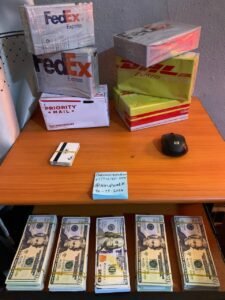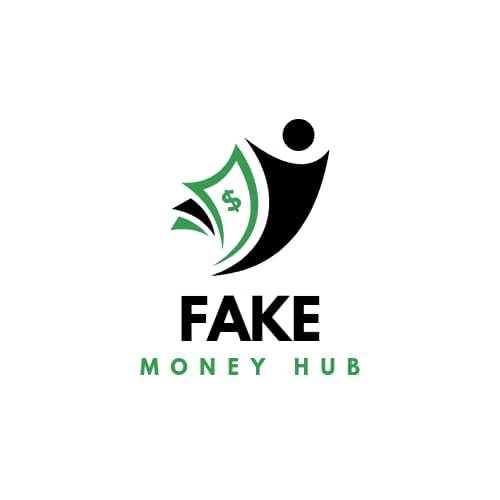Buy Counterfeit $20 Bills | Buy Fake $20 Bills
Since the Covid, Buy Fake Dollars have become a serious problem for both businesses and
individuals. So there is a chance you can also be scammed.
It’s important to know how to detect Fake Dollar Currency. If you know the right ways it’s not hard to detect the real
ones.$100 or $20 dollar bill has specific security features.
So it is hard to exactly design them. Here’s how to spot a Counterfeit $100 Bill and $20 Dollar Bill.

What Are Counterfeit Bills?
Counterfeit Bills are Counterfeit Currency. The main intent is to deceive individuals into accepting them as legitimate. Scammers use high quality printers to create them.
So it’s hard to detect them . In order to counter this, the U.S. government and Federal Reserve keep improving the security features on bills.
How to Detect Counterfeit $100 Bill and $20 Dollar Bill?
Feel the Paper Texture
Unlike ordinary paper, the paper used in original US currency consists of special two
types of papers, namely cotton and linen, and thus, when touched, feels different as well.
One of the first aspects that a person should observe when they come in touch with a
genuine bill is the characteristic feel of the surface, which is much more pronounced on
new currency.
Fake Dollars lack the distinctive feel of authentic currency. They may feel more like
regular paper or plastic.
Examine the Watermark
Each genuine $ 100 bill bears a faint watermark of Benjamin Franklin. This watermark
is positioned to the right of Franklin’s effigy. Besides, there is a faint picture of Franklin
that can be seen when the stimulus is lifted.
It is visible on both faces of the $100 bill.
The $20 bill has a watermark as well; however, this one is slightly different. An image of
Andrew Jackson can be watched in that light, but this is a much more subdued
photograph.
Many of the fake bills have no watermarks, or they have poorly executed one-sided
watermarks that cannot be seen when facing either side of the object.
Look for Color-Shifting Ink
Color-shifting ink is one of the most prominent security features of the $100 ill. When
you tilt the bill, the number “100” changes color from copper to green. This feature is
present in all Series 1996 and later $100 Bills.
The $20 bill also includes color-shifting ink, but it is located in the lower-right corner.
The number “20” will change from copper to green when tilted.
When you tilt a fake bill, the color may not change as distinctly or may appear more
blurry.
Examine the Security Thread
A security thread can be found inside the $100 bill. It is located on the left of Franklin’s
portrait and runs from the top to the bottom, and can be viewed when the bill is held up
to the light. It has “USA 100” written across it and can be viewed under normal light as
well as ultraviolet light.
The $20 Bill also has a security thread; however, this one has “USA 20” on it and it is
located a little to the left of Jackson’s portrait.
Counterfeiters may print a fake thread or attempt to replicate it with ink. These are easy
to spot as they do not have the same embedded texture or proper placement.
Buy Fake Dollars | Buy Fake 100 Dollars
Check the Micro-Printing
Genuine $100 bills contain micro-printing. You can find it around Benjamin Franklin’s
portrait and the security thread. If you use a magnifying glass, you will see tiny text that
says “USA 100” or “The United States of America.”
The $20 bill also contains micro-printing. It can be found near the portrait and security
thread. It’s often too small to be read without magnification. Buy Fake Canadian Dollars may have
no micro-printing, or it will be blurry and hard to read.
Check the Serial Numbers
The serial numbers on U.S. currency are evenly spaced and printed in a uniform, clear
font. Each bill has a unique serial number.
Buy Fake US Dollars Online often have serial numbers that are unevenly spaced, misaligned, or
duplicated. The numbers may appear fuzzy or inconsistent in font, making them easy to
spot.
Use UV Light
Under ultraviolet light, the security thread of the $100 bill will glow pink. It’s hard for
scammers to replicate. Similarly, the security thread of the $20 bill will glow green
under UV light.
Counterfeit US Bills usually fail to glow. It may also glow in an unnatural color under UV
light.
What to Do if You’ve Been Passed a Counterfeit Bill
If you’ve accidentally received a counterfeit bill, it’s essential to act quickly and properly
to avoid further issues. Here’s what you should do:
Do Not Spend It
If you think your bill is counterfeit, do not give it to anyone else. The use or attempt to
use counterfeit currency is illegal and can result in charges being filed against you.
Notify Authorities
If you believe you’ve received a counterfeit bill from a person, report it to the authorities
immediately. You can contact the local police or the U.S. Secret Service.
Turn It In to the Bank
In case you received the fake bill at a bank or retail outlet, contact the bank manager or
the store manager, who will coordinate with law enforcement agencies to address the
issue. There are usually special procedures that Banks may have in place for dealing
with false currency.
If you handle a lot of cash in your business or personal transactions, it’s essential to
familiarize yourself with the features of genuine U.S. currency.
Preserve the Evidence
Do not try to mark or damage the counterfeit bill. Keep it in its original condition so law
enforcement can use it as evidence if needed. If you’ve been passed a fake bill, get a
detailed description of the person who passed it.
Share information about how to spot Counterfeit $100 Bills with employees, family members,
and friends. By educating others about U.S. currency security features, counterfeit
money can be prevented.

